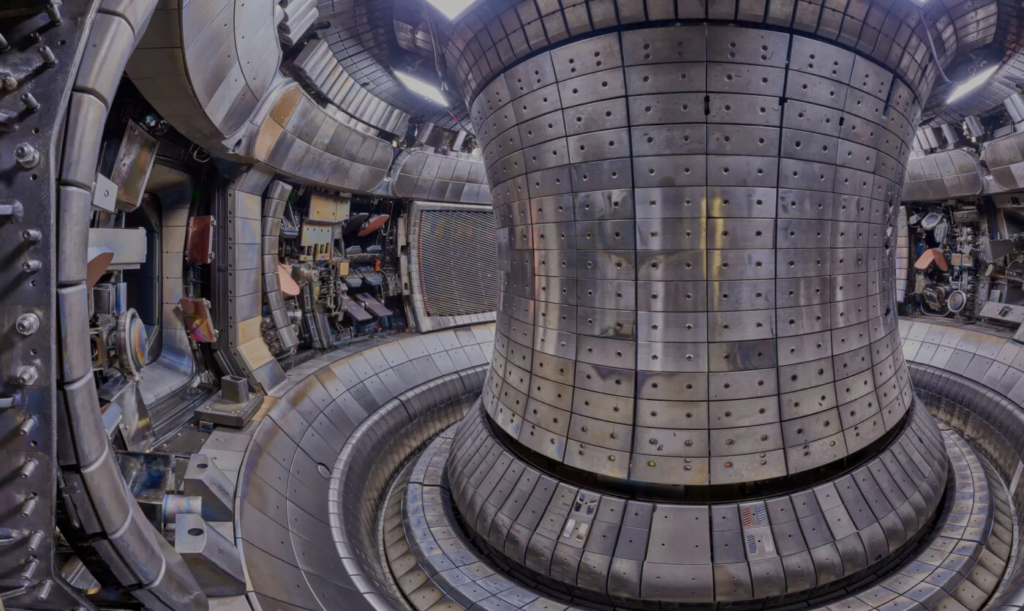CINECA has signed an agreement with ENEA and EUROfusion that calls for an investment of 50 million euros over five years to build a next-generation supercomputer for fusion energy research. The new High Performance Computing (HPC) infrastructure, capable of about 47 million billion operations per second, will be installed at Cineca’s headquarters in Casalecchio di Reno at the end of 2023 and will become part of the Bologna Technopole ecosystem. It will be dedicated to numerical simulation of plasma physics and structural analysis of advanced materials for nuclear fusion, a safe and sustainable source of energy for future generations.
The agreement calls for the creation of a supercomputer of about 47 petaflops or 47 million billion operations per second, consisting of a conventional partition (13.6 petaflops) and an accelerated partition (33.7 petaflops), as well as a third Gateway partition offering a set of additional services and user, application, code and data management. The infrastructure will also provide support activities for the European nuclear fusion science community to make the best use of these systems in their research areas.
We are pleased to contribute to the implementation of this advanced High Performance Computing infrastructure, which will help strengthen our position as a leader in fusion energy research,” says EUROfusion program manager Tony Donné. “In addition,” he adds, “I would like to express our satisfaction with the continuation of the fruitful partnership with ENEA and CINECA, thanks to which it will be possible to secure HPC resources for the EUROfusion community, as part of a collaboration that has already made further important strides in our research and innovation activities and will enable us to make further progress on the path to fusion energy.
With this new project, CINECA confirms itself as one of the most important supercomputing centers internationally and the Tecnopolo of Bologna ecosystem as one of the largest concentrations of high-performance computing systems worldwide,” comments CINECA President Francesco Ubertini. “This agreement,” he adds, “is the continuation of a collaboration begun in 2016 to extend a partition of the Marconi supercomputer to the nuclear fusion science community. In 2020, the Marconi system was ranked among the top 10 most powerful in the world, paving the way for the realization of the Leonardo project, now ranked 4th in the world, and the creation of this new supercomputer dedicated exclusively to fusion research.”
With the agreement just signed, ENEA and CINECA reinforce their primary role at the international level in the provision of high-performance computing services for fusion energy research,” stresses Alessandro Dodaro, director of ENEA’s Department of Fusion and Nuclear Safety Technologies and the Agency’s contact person for the agreement. “In order to respond adequately to the needs of the EUROfusion community,” he adds, “we have elaborated a technical specification based on the most modern and innovative computing architectures, to the development of which the ENEA Department of Energy Technologies and Renewable Sources with the Division for the Development of Systems for Information Technology and ICT has contributed in a decisive way.
Fusion energy
Nuclear fusion is the so-called ‘star power’ that uses the same mechanism to produce clean energy on Earth in a safe and sustainable way, a technological and scientific challenge that will allow us to move away from fossil fuels and counter climate change. It was first reproduced on Earth in the 1950s, while since the 1960s many experiments have been carried out to lay the groundwork for future fusion power plants.
To date, the largest international project on fusion is ITER, the International Thermonuclear Experimental Reactor, which is at an advanced stage of construction in Cadarache, France, and was created as part of a collaboration between seven economic powers representing 50 percent of the population and 85 percent of global GDP (European Union, China, India, Japan, South Korea, Russia and the United States). The goal is to demonstrate the feasibility of fusion power generation on a commercial scale by integrating different technologies within a power plant.
Italy is contributing to the path toward fusion in particular with the DTT (Divertor Tokamak Test) project, the experimental machine under construction at ENEA’s Frascati Research Center (Rome).
More information in the press release on the Cineca website.


